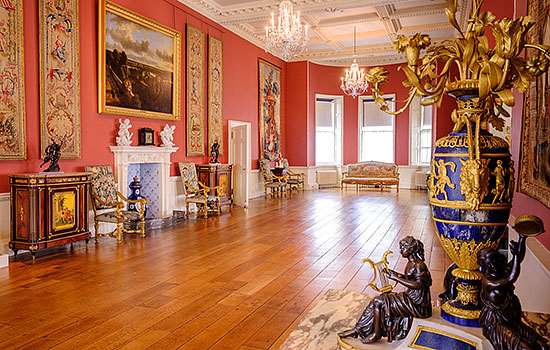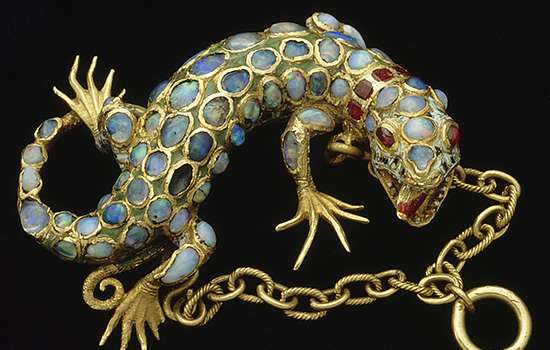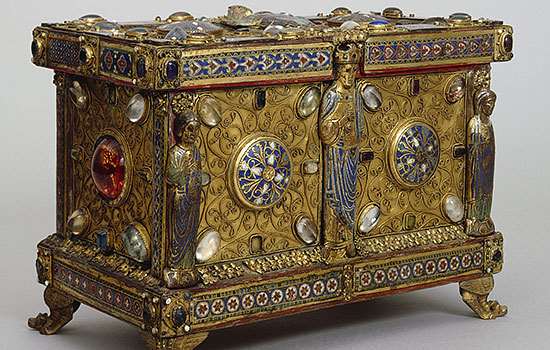Star object
Pair of dishes
- Nicola di Gabriele Sbraghe, known as Nicola da Urbino
- About 1524
- Tin-glazed maiolica
- Italy
With its bright and detailed form of decoration, this pair of dishes is a fine example of the isoriato style of mailoica pottery. Introduced by the renowned Italian ceramicist Nicola da Urbino, isoriato dedicated the entire surface of a dish to a single historical or mythological scene.
The dishes formed part of a large dinner service belonging to Isabella d’Este, Marchesa of Mantua, who was a great patron of the arts in northern Italy. The service was commissioned by her daughter Eleonora Gonzaga. Both dishes bear the Este-Gonzaga coat of arms, which features Isabella’s Latin motto, NEC SPE NEC METV [metu], meaning ‘without hope and without fear’.
Artists and makers
Apothecary jar
- Workshop of Orazio Pompeii
- About 1540–60
- Tin-glazed maiolica
- Italy
This jar shows a stylised portrait of a woman in contemporary Italian dress.
What makes the jar so remarkable is its reverse side. If you look in the mirror behind it, you can see the back of the jar, which shows a rough design for another woman in profile. This is an extremely rare example of a trial sketch on maiolica, and may have been an abandoned plan for the design on the front.
The jar was once used to store medicine and probably stood on a shelf in a pharmacy. It would have cost the owner more to have both sides of the jar painted, and as customers would only have seen one side, it seems likely that the artist was commissioned to finish the display side only. The unfinished sketch shows not only the artist’s creative process, but also the financial limits of its original owner.
View the jar in 3D









